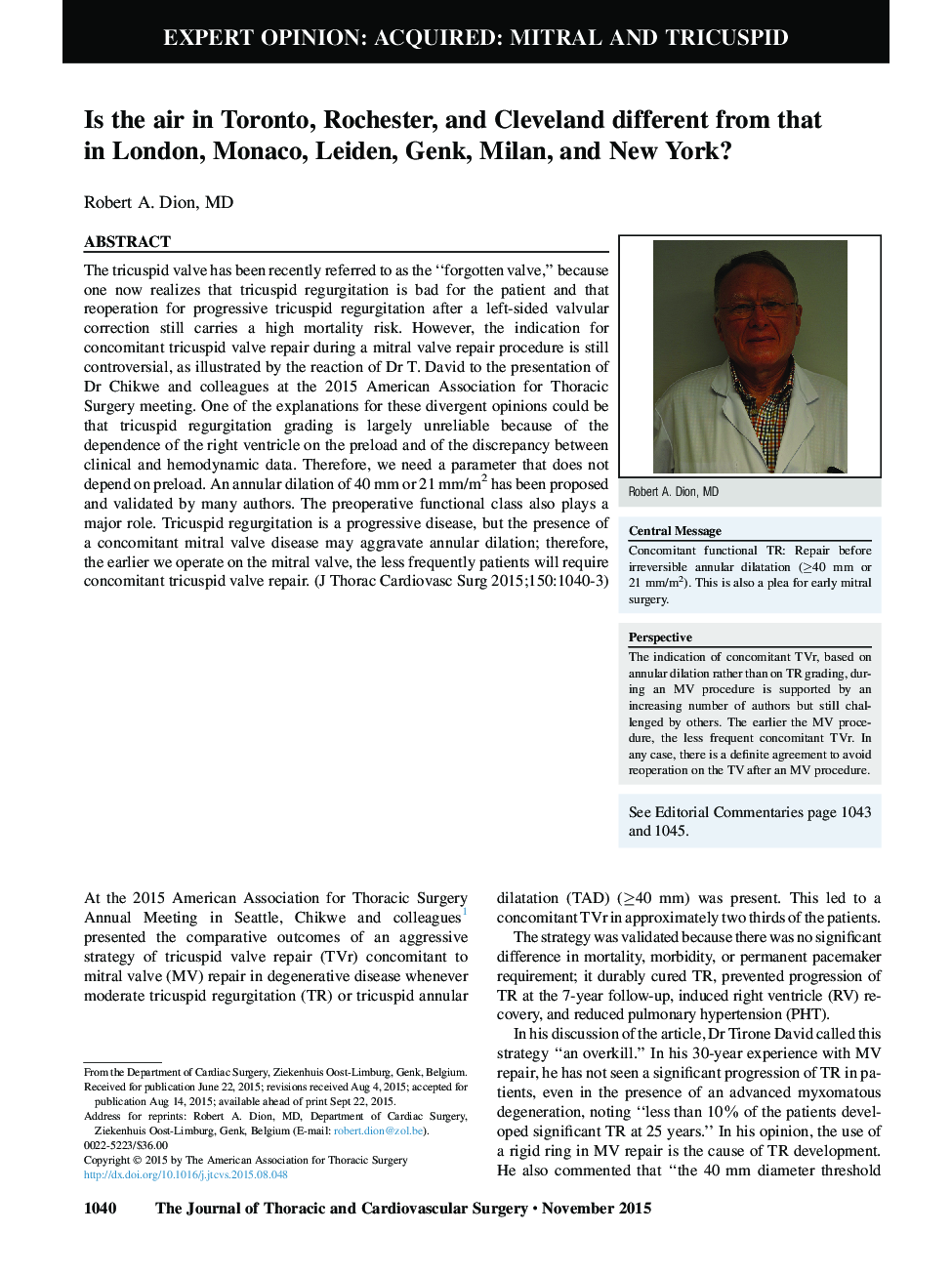| Article ID | Journal | Published Year | Pages | File Type |
|---|---|---|---|---|
| 2979226 | The Journal of Thoracic and Cardiovascular Surgery | 2015 | 4 Pages |
The tricuspid valve has been recently referred to as the “forgotten valve,” because one now realizes that tricuspid regurgitation is bad for the patient and that reoperation for progressive tricuspid regurgitation after a left-sided valvular correction still carries a high mortality risk. However, the indication for concomitant tricuspid valve repair during a mitral valve repair procedure is still controversial, as illustrated by the reaction of Dr T. David to the presentation of Dr Chikwe and colleagues at the 2015 American Association for Thoracic Surgery meeting. One of the explanations for these divergent opinions could be that tricuspid regurgitation grading is largely unreliable because of the dependence of the right ventricle on the preload and of the discrepancy between clinical and hemodynamic data. Therefore, we need a parameter that does not depend on preload. An annular dilation of 40 mm or 21 mm/m2 has been proposed and validated by many authors. The preoperative functional class also plays a major role. Tricuspid regurgitation is a progressive disease, but the presence of a concomitant mitral valve disease may aggravate annular dilation; therefore, the earlier we operate on the mitral valve, the less frequently patients will require concomitant tricuspid valve repair.
